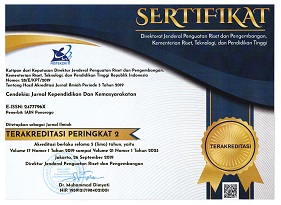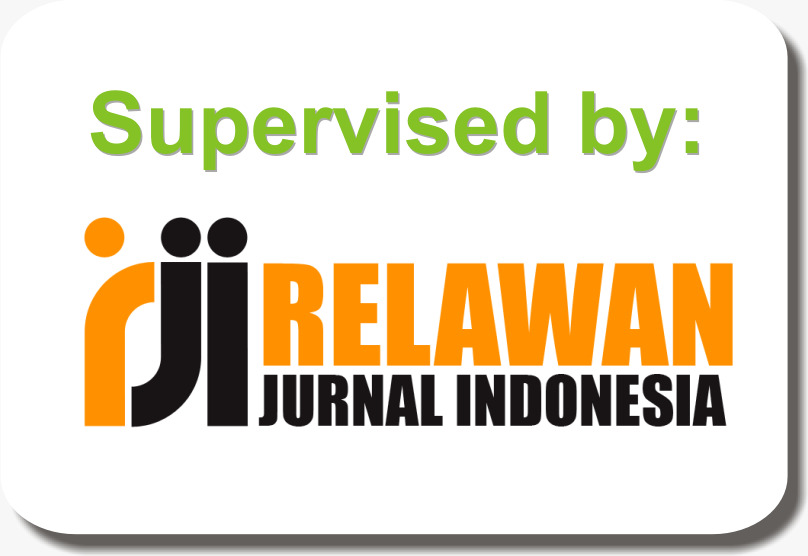Muslim Post-Graduate Students’ Self-Leadership Skills and Productivity during Remote Teaching and Learning
DOI:
https://doi.org/10.21154/cendekia.v21i1.5518Keywords:
self-leadership, higher education institutions, productivityAbstract
The study aims to investigate the impact of self-leadership on Muslim postgraduate students’ achievement or productivity during remote teaching and learning in Malaysian higher education institutions. The research instrument was a Likert questionnaire that measured the dimensions of self-leadership and productivity. The study employed principal component analysis (PCA) and path analysis using AMOS. The findings supported self-leadership as a multidimensional construct with five underlying dimensions comprising self-determined goals, self-reward, self-punishment, self”“observation and self-cueing. Several latent variables further supported each dimension. In addition, the results showed that the dimensions of self-leadership and productivity are psychometrically sound regarding divergent and convergent validity. The average variance explained for each variable was (> .05), and the values for composite reliability of the constructs ranged from (.887 and .910). Furthermore, the study found that the dimensions of self-leadership, i.e. self-goal, self-reward, self-punishment, self”“observation and self-cueing, positively predicted Muslim students’ productivity during remote teaching and learning, with a p-value of less than 0.00. The study recommends promoting self-leadership strategies to enhance students’ productivity and, in turn, their overall educational performance.References
Field, Andy. Discovering Statistics Using IBM SPSS Statistics. California: Sage Publications, 2013.
Grint, Keith, dan Owain Smolovic. “What is Leadership: Person, Result, Position or Process, or All or None of These?” Dalam The Routledge Companion to Leadership, 25”“42. Routledge, 2016.
Hodges, Charles B., Stephanie Moore, Barbara B. Lockee, Torrey Trust, dan Mark Aaron Bond. “The Difference Between Emergency Remote Teaching and Online Learning.” Virginia Tech, 2020, 5.
Jooste, Karien, dan Jose Frantz. “Self-Leadership Traits of Academics to Conform to a Changing Higher Education Environment.” African Journal of Health Professions Education 9, no. 4 (2017): 199”“202.
Kalargyrou, Valentini, Anthony T. Pescosolido, dan Emmanuel A. Kalargiros. “Leadership Skills in Management Education.” Academy of Educational Leadership Journal 16, no. 4 (2012): 39.
Kivinen, Sonja, Jon Moen, Anna Berg, dan Ã…sa Eriksson. “Effects of Modern Forest Management on Winter Grazing Resources for Reindeer in Sweden.” Ambio 39 (2010): 269”“78.
Leithwood, Kenneth, dan Karen Seashore-Louis. Linking Leadership to Student Learning. John Wiley & Sons, 2011.
Louis, Louis, Karen Seashore, Kenneth Leithwood, Kyla L. Wahlstrom, Stephen E. Anderson, Michael Michlin, dan Blair Mascall. “Learning from Leadership: Investigating the Links to Improved Student Learning.” Wallace Foundation 42 (2010): 65”“73.
Lovelace, Sherri, dan Sharon R. Stewart. “Increasing Print Awareness in Preschoolers with Language Impairment Using Non-Evocative Print Referencing.” Journal of Language, Speech, and Hearing Services in Schools (LSHSS) 38, no. 1 (2007): 16”“30.
Manz, Charles C., Jeffery D. Houghton, Christopher P. Neck, Mel Fugate, dan Craig Pearce. “Whistle While You Work: Toward a Model of Emotional Self-Leadership.” Journal of Leadership & Organizational Studies 23, no. 4 (2016): 374”“86.
Nadhif, Ahmad, dan Indah Rohmatika. “The Role of Self-Regulated Learning on Students’ English Achievement.” Cendekia: Jurnal Kependidikan Dan Kemasyarakatan 18, no. 2 (2020): 249”“66.
Neck, Christopher P., dan Jeffery D. Houghton. “Two Decades of Self-Leadership Theory and Research: Past Developments, Present Trends, and Future Possibilities.” Journal of Managerial Psychology 21, no. 4 (2006): 270”“95.
Pallant, Julie F., Helen M. Haines, Ingegerd Hildingsson, Maddalena Cross, dan Christine Rubertsson. “Psychometric Evaluation and Refinement of the Prenatal Attachment Inventory.” Journal of Reproductive and Infant Psychology 32, no. 2 (2014): 112”“25.
Rossi Ferrario, Silvia, Anna Panzeri, Pasquale Anselmi, dan Giulio Vidotto. “Development and Psychometric Properties of a Short Form of the Illness Denial Questionnaire.” Psychology Research and Behavior Management, 2019, 727”“39.
Susanto, Susanto. “The Challenge of the Integrated Character Education Paradigm With 21st-Century Skills During the Covid-19 Pandemic.” Cendekia: Jurnal Kependidikan Dan Kemasyarakatan 20, no. 1 (2022): 82”“87.
Taherdoost, Hamed. “Determining Sample Size: How to Calculate Survey Sample Size.” International Journal of Economics and Management Systems 2 (2017): 237”“39.
Tracy, Jessica L., dan Richard W. Robins. “Putting the Self into Self-Conscious Emotions: A Theoretical Model.” Psychological Inquiry 15, no. 2 (2004): 103”“25.
Wiek, Arnim, Lauren Withycombe, dan Charles L. Redman. “Key Competencies in Sustainability: A Reference Framework for Academic Program Development.” Sustainability Science 6 (2011): 203”“18.
Downloads
Published
Issue
Section
License
Copyright & License
Please find the rights and licenses in Cendekia: Jurnal Kependidikan dan Kemasyarakatan. By submitting the article/manuscript, the author(s) agree with this policy. No specific document sign-off is required.
1. License
The non-commercial use of the article will be governed by the Creative Commons Attribution license as currently displayed on the Creative Commons Attribution-NonCommercial 4.0 International License.
2. Author(s)' Warranties
The author warrants that the article is original, written by the stated author(s), has not been published before, contains no unlawful statements, does not infringe the rights of others, is subject to copyright that is vested exclusively in the author and free of any third party rights, and that any necessary written permissions to quote from other sources have been obtained by the author(s).
3. User/Public Rights
The spirit of Cendekia: Jurnal Kependidikan dan Kemasyarakatan is to disseminate articles published as free as possible. Under the Creative Commons license, Cendekia: Jurnal Kependidikan dan Kemasyarakatan permits users to copy, distribute, display, and perform the work for non-commercial purposes. Users will also need to attribute authors and Cendekia: Jurnal Kependidikan dan Kemasyarakatan on distributing works in the journal and other media of publications. Unless otherwise stated, the authors are public entities as soon as their articles got published.
4. Rights of Authors
Authors retain all their rights to the published works, such as (but not limited to) the following rights;
- Copyright and other proprietary rights relating to the article, such as patent rights,
- The right to use the substance of the article in own future works, including lectures and books,
- The right to reproduce the article for own purposes,
- The right to self-archive the article,
- The right to enter into separate, additional contractual arrangements for the non-exclusive distribution of the article's published version (e.g., post it to an institutional repository or publish it in a book), with an acknowledgment of its initial publication in this journal (Cendekia: Jurnal Kependidikan dan Kemasyarakatan).
5. Co-Authorship
If the article was jointly prepared by more than one author, any author submitting the manuscript warrants that he/she has been authorized by all co-authors to be agreed on this copyright and license notice (agreement) on their behalf and agrees to inform his/her co-authors of the terms of this policy. Cendekia: Jurnal Kependidikan dan Kemasyarakatan will not be held liable for anything arising due to the author(s) internal dispute. Cendekia: Jurnal Kependidikan dan Kemasyarakatan will only communicate with the corresponding author.
6. Royalties
Being an open accessed journal and disseminating articles for free under the Creative Commons license term mentioned, the author(s) are aware that Cendekia: Jurnal Kependidikan dan Kemasyarakatan entitles the author(s) to no royalties or other fees.
7. Miscellaneous
Cendekia: Jurnal Kependidikan dan Kemasyarakatan will publish the article (or have it published) in the journal if the article's editorial process is completed. The editors of Cendekia: Jurnal Kependidikan dan Kemasyarakatan may modify the paper to a style of punctuation, spelling, capitalization, referencing, and usage that deems appropriate. The author acknowledges that the article may be published so that it will be publicly accessible, and such access will be free of charge for the readers, as mentioned in point 3.

















